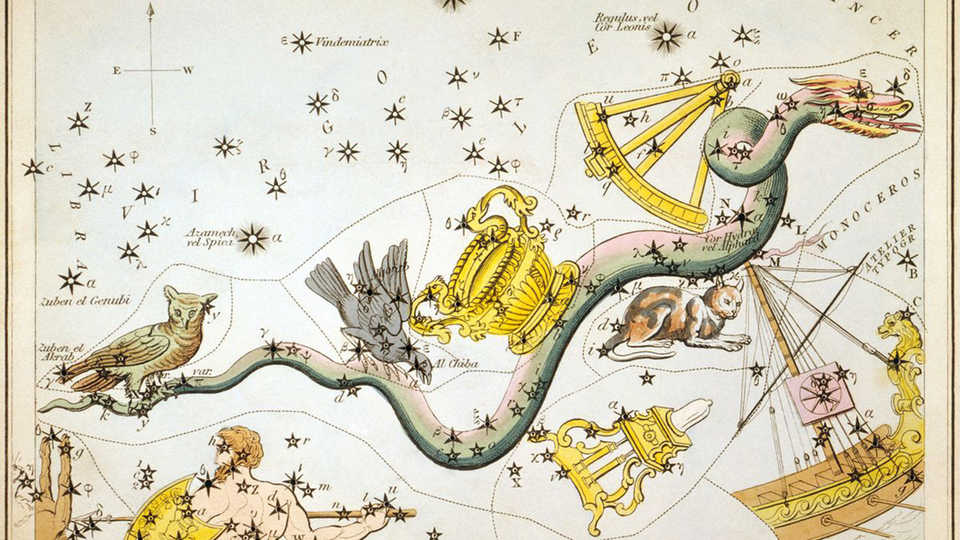Science News
The Crow in the Stars

Although no longer visible in summer’s evening sky, there is (appropriately for Corvid Week) a crow among the stars. In the early evening sky of mid-spring, look southeast just after sunset for the small, irregular, four-sided polygon which is the constellation Corvus the Crow. It’s located about 15 degrees southwest of the bright star Spica and just above the midpoint of the long, sinuous line of stars forming the faint figure of Hydra the Watersnake.
According to one version of the Greek myth (each legend typically has several variations), Corvus was originally a white bird with a beautiful singing voice. One day, the god Apollo commanded Corvus to fetch a cup of water from a stream; however, instead of doing so immediately, Corvus dallied by the stream to eat figs from a nearby tree. The crow blamed the delay on a water snake, which the god knew was a lie. As punishment, Apollo turned the crow black and changed its voice to a harsh caw. Furthermore, he cursed the crow with eternal thirst and placed it in the sky, chasing Crater the Cup, but never able to drink from it, which is being dragged out of reach in the coils of the wronged Hydra the Watersnake.
Moral of the story: get your own water, Apollo!
But more than being just a character in an ancient fable, Corvus also had a very important function in ancient cultures, playing a part in a phenomenon known as “heliacal rising.” Recognized as a reliable method of calendar-keeping throughout history, heliacal rising occurs when an object emerges from the the glow of the Sun, rising just before dawn and washed from view almost immediately in the growing daylight. On its first appearance, it’s visible only briefly, but each successive morning, it remains visible longer and longer. Because of the regularity of Earth’s orbit about the Sun, our star’s apparent position against the background stars is also very regular, causing a given object’s heliacal rising to take place on the same date each year.
For the Egyptians, the helical rising of the star Sirius (which they called Sothis) occurred just before the annual flooding of the Nile River, which irrigated farmlands along the banks. For the Babylonians, Corvus was Mul Uga Mushen, a heavenly raven associated with Adad, the god of rain and storms, and its heliacal rising—the first appearance of the raven—foretold the start of the coming of autumn rains.
Image Credit: Library of Congress / Wikimedia